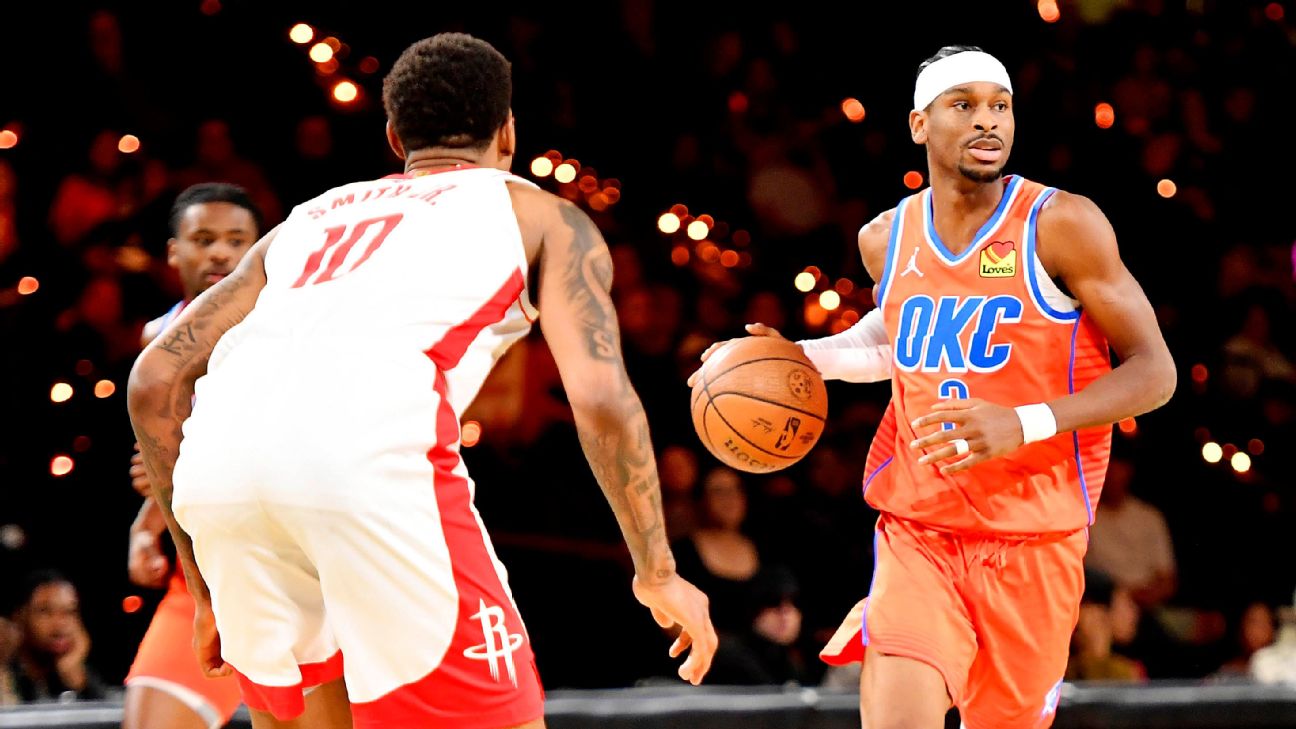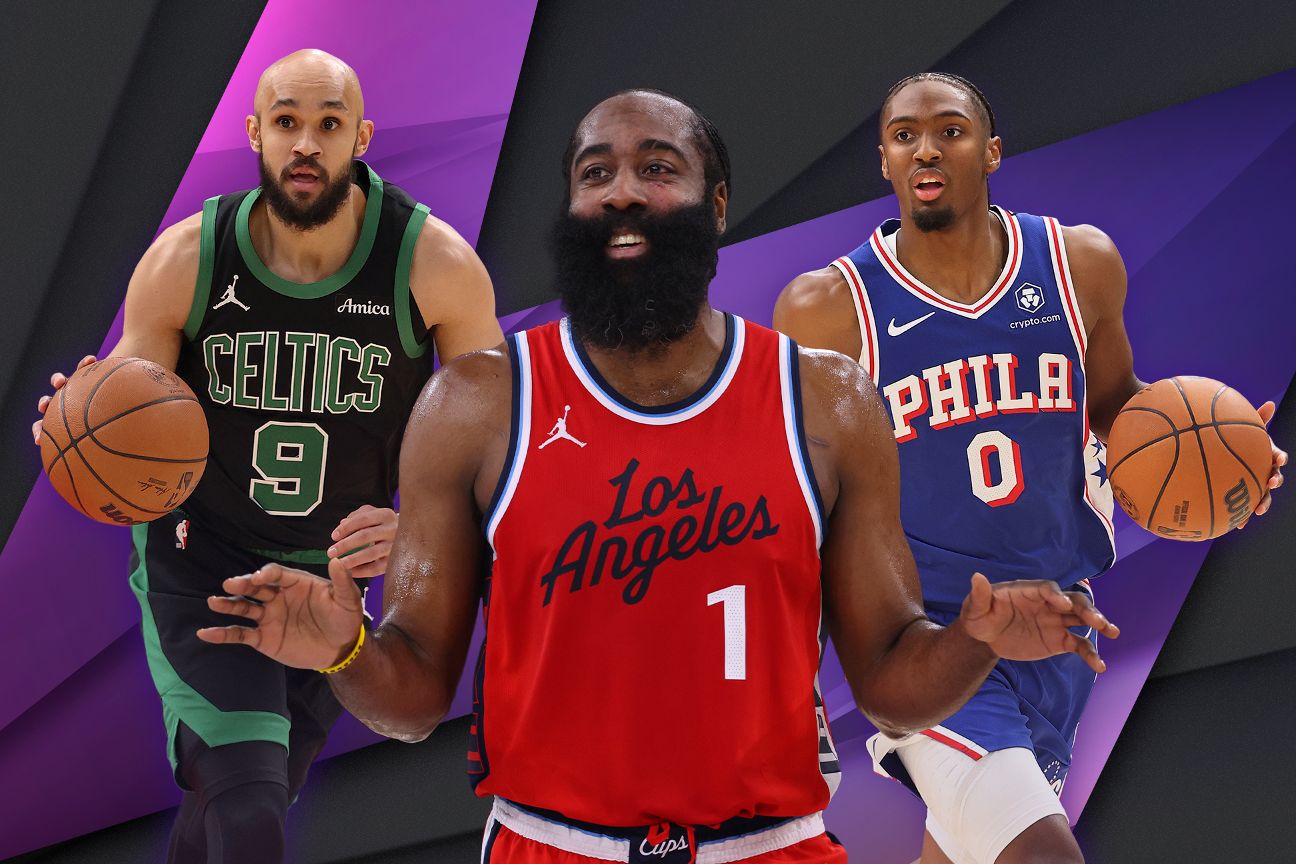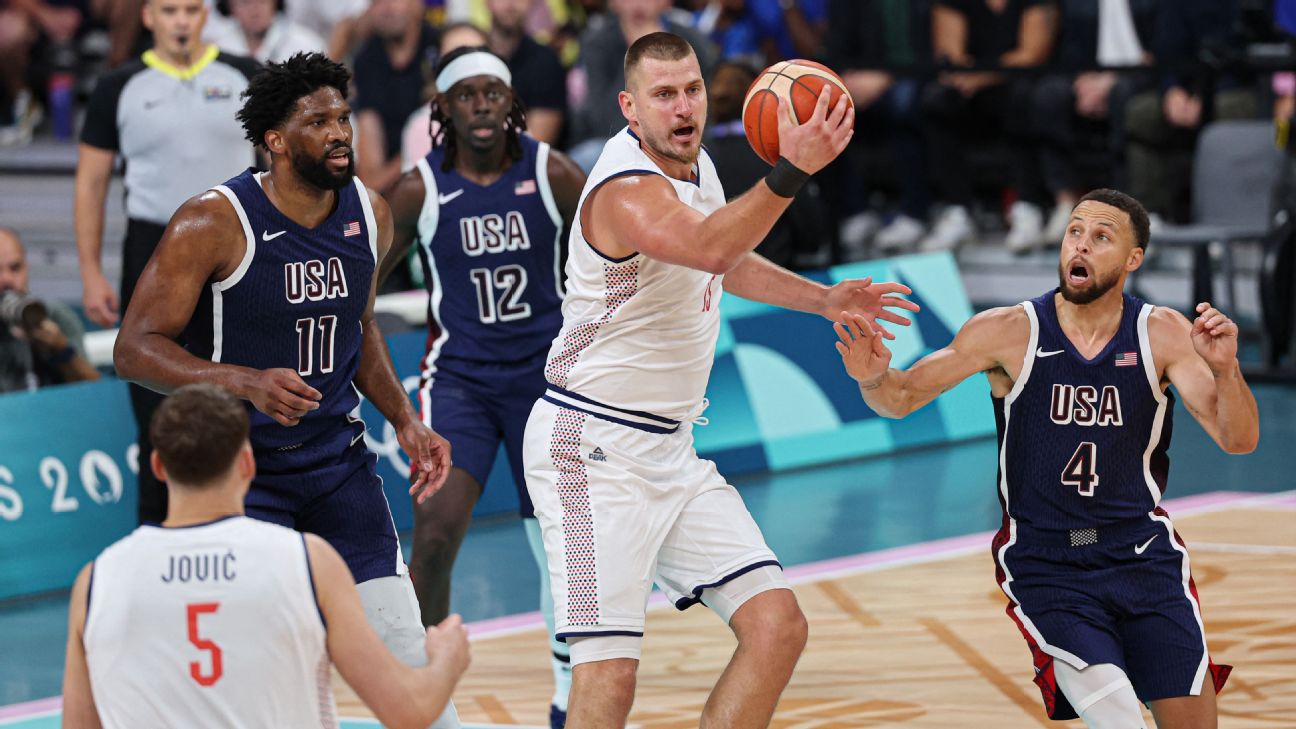ON HIS FIRST day of training camp as a rookie in 2023, Victor Wembanyama explained how the San Antonio Spurs could best position him, and the franchise, for success.
It was around 90 days after the French phenom was selected No. 1 in the 2023 NBA Draft.
Conventional basketball wisdom said the 7-foot-3 Wembanyama should live in the paint and take his shots near the basket. He should screen, rebound and defend. Block shots. Hand off the ball to guards to facilitate offense. That’s what most big men do.
But Wembanyama is no ordinary big. He knew it. So the 19-year-old sat with the Spurs staff and they discussed how conventionality would stifle his creativity, and therefore limit the team’s ceiling with him as its centerpiece.
“The best way for me to help is to not put me in a box,” Wembanyama told the Spurs ahead of his first NBA season. “[Spurs coach Gregg Popovich] knows it. He learned to know me and I’m learning to know him. We know we are going to make something original, something special.”
It didn’t take long.
Wembanyama led all rookies in points (21.4), rebounds (10.6) and blocks per game (3.6), ranking fourth in assists (3.9) and second in steals per game (1.2). He was the first player to average at least 20 points, 10 rebounds and 3 blocks in fewer than 30 minutes per game, and finished his rookie campaign as the first player in a season to rack up at least 1,500 points, 700 rebounds, 250 assists, 250 blocks and 100 3-pointers on the way to being voted unanimous rookie of the year.
He averaged the most points per possession by any rookie since Michael Jordan (min. 1,000 minutes). He posted two triple-doubles, too, one with assists and another with blocks. Wembanyama logged a 5×5 game against the Los Angeles Lakers that included 27 points, 10 rebounds, 8 assists, 5 blocks and 5 steals, earning recognition as the youngest player in NBA history to do so.
This season has been no different — a multi-hyphenate showing the power of his unrivaled versatility.
When Wembanyama logged his first triple-double of this season on Dec. 1 in a 127-125 win over the Sacramento Kings, 15 of his 34 points came off 3s. He fired seven 3-pointers among his first 10 attempts and just two from 5 feet or closer.
But with San Antonio trailing 97-92 entering the final frame, Wembanyama went back to convention.
Instead of continuing his 3-point barrage, Wembanyama moved inside, lighting up Sacramento for 13 points on 4-of-5 shooting with 6 rebounds, 4 assists and 2 blocks. None of those five shots came from beyond the arc. Three landed from 7 feet or closer.
The performance provided one of the first glimpses this season of Wembanyama learning how — and most importantly — when to deploy his vast skill set. And how ruthlessly effective it can be. After the game, Wembanyama once again cautioned against putting him in a box.
“Don’t,” he said.
“I won’t fit.”
THOUGH WEMBANYAMA DRILLED 4 of 6 shots from deep in the first half of the win over the Kings, Spurs acting head coach Mitch Johnson pointed out that his second-year big “had some very poor moments in the first three quarters in terms of fundamentals and solid basketball.”
Johnson said Wembanyama committed four turnovers over that span and finished with a game-high five due, in part, to missed catches and errant passing.
“He can do everything,” Johnson said after the game. “So, when you have that many options on the menu, to think you’re going to pick the right one every time is tough. He’s a young player that’s learning how to use all the weapons that he has. There’s obviously tremendous belief and great support for him as he learns when and where to utilize all those weapons.”
Wembanyama’s diverse skill set can sometimes make it hard for him to decide how best to deploy his talents on a game-to-game basis.
Of the players to log 350 shots or more this season, Wembanyama ranks 13th in percentage of jump shots taken (63.4%), placing him on a list chock-full of guards and wings. Wembanyama hoists a higher percentage of jumpers than Tyler Herro (62.9%) Jalen Green (61.7%), Darius Garland (59.2%), Kyrie Irving (57.7%), Shai Gilgeous-Alexander (56.4%) and even Trae Young (55.2%).
Wembanyama owns an average shot distance of 17.7 feet, nearly the same as Donovan Mitchell and Luka Doncic.
Internally, the Spurs are often amused to hear so much conversation and consternation about the shot diet of their young star — one team source believes Wembanyama is closer to Kevin Durant than, say, Hakeem Olajuwon, which helps explain why nearly half his shot attempts come from beyond the arc.
“It doesn’t surprise me because it’s conventional wisdom,” Johnson said of the criticism regarding Wembanyama’s penchant for shooting 3s. “For someone that is as in tune with who he wants to be and who he has the potential to be as Victor, it’s our job to respect that and kind of partner with him in growing who that is. I think there’s just an element of understanding sometimes when and how. As he gets more experience, he’s gotten a lot better with that.”
And though such diversity in Wembanyama’s game provides optionality for the Spurs, it creates unpredictability for the opposition.
“You can tell he knows his players very well,” Portland coach Chauncey Billups said before Wembanyama zipped seven assists on Dec. 13 in a Spurs comeback victory over the Trail Blazers. “He can just kind of drive it and throw it knowing that a guy’s going to be cutting.”
Even so, Wembanyama said he is still getting comfortable with playmaking.
“Facing a good amount of double teams, it is my responsibility to give the opportunity to my teammates to capitalize,” Wembanyama said. “Before coming into the league, I never really had 10 assists or more and rarely had seven-plus. So, it’s in my development and a step I’m willing to take because I’m trying to force teams to guard me with more than one player.”
Veteran teammate Harrison Barnes said that for all the growing pains, such as 3-point attempts from the logo early in the possession, they’re all done for the right reason.
“So many people, they have so many criticisms they want to talk about. ‘He should be this. He should be that. He should play this way,'” Barnes said. “My thing is look, he’s going to play his style and he’s going to do it his way. It may not be the exact mold people want him to be in or expect him to be. But he’s going to do it his way, and the biggest thing is that he wants to win. That’s his North Star.”
IN THE WAKE of the triple-double against the Kings, Wembanyama leaned back in a chair inside a cramped dark room, and thought about some of the changes he already has made in his game.
Wembanyama admits his vast array of assets sometimes creates confusion for him, but he credits the Spurs’ video team with helping him slow down the game. Before every game, the video staff loads an iPad full of clips of the various defensive looks the opponent utilized against him in the last matchup.
“The real difficulty is adjusting to the defense in real time, the type of coverage,” Wembanyama said. “Because the answers are always there when we watch film afterwards. It’s easy to spot them. But reacting in real time is very difficult.”
But thanks to his film study, Wembanyama is starting to recognize all the patterns used against him. Billups explained before Saturday’s game that the only way to defend Wembanyama is with a defensive scheme as varied as his skill set.
Heading into Monday’s matchup against the Philadelphia 76ers (7 p.m. ET, NBA TV), Wembanyama is coming off two historic performances. On Thursday, Wembanyama’s 42-point performance against the Atlanta Hawks made him the first NBA player to connect on seven 3-pointers while totaling 6 rebounds, 5 assists and 4 blocks in the same game. And his 30-point, 10-block showing on Saturday against the Blazers put him in rare air again.
San Antonio trailed by three points during its 133-126 overtime victory against Atlanta when Wembanyama re-entered the game. He started the sequence with an 8-foot pull-up jumper, followed by a step-back 3 and a floater off the glass.
On San Antonio’s next possession, Wembanyama posted near the free-throw line with Hawks center Clint Capela defending. As the shot clock ticked down, Wembanyama took a jab step outside, then drove back inside, before ducking under Capela’s outstretched arms to float the ball high off the glass underhanded, just as Spurs forward Julian Champagnie cut to the basket. Wembanyama caught his self alley-oop off the backboard with 1 second left on the shot clock for a two-handed jam to tie the score at 101 as the 17,852 fans in the Frost Bank Center erupted.
He then closed the sequence by throwing a seemingly impossible lob from beyond the 3-point line to Jeremy Sochan, who completed the play with Bogdan Bogdanovic and Dyson Daniels defending within arm’s length.
The 11-point run gave the Spurs a 103-101 advantage, with Wembanyama accounting for nine of those points and providing the assist on the bucket by Sochan. In the overtime period, Wembanyama then scored eight of the Spurs’ 13 points, shooting 3-of-4 from the floor and 2-of-2 from 3-point range.
“Vic, I know I have to be careful of not taking [him] for granted,” point guard Chris Paul said. “I gave up a layup tonight and I was just like, ‘Vic, where you at?’ He just covers up so many mistakes. I don’t know how many blocks he had tonight. He’s just … he’s different.”
That’s just fine for a Spurs organization that shares Wembanyama’s vision for what he could become. Coaches and teams have told Wembanyama for as long as he can remember what to do, what not to do, what he is, what he isn’t.
“That everyday fight you talk about is something I’ve been through, of course, growing up a lot,” Wembanyama said. “But now, I’m experiencing levels of freedom that I’ve never really had the chance before to have. And for me, it’s also the clearest path into how to get better and how to get to the top level.
“So, it makes sense that we see creativity on the court because I think it’s the best way for me to help my team. They’re not putting me in a box, and I’m not going to, either.”



